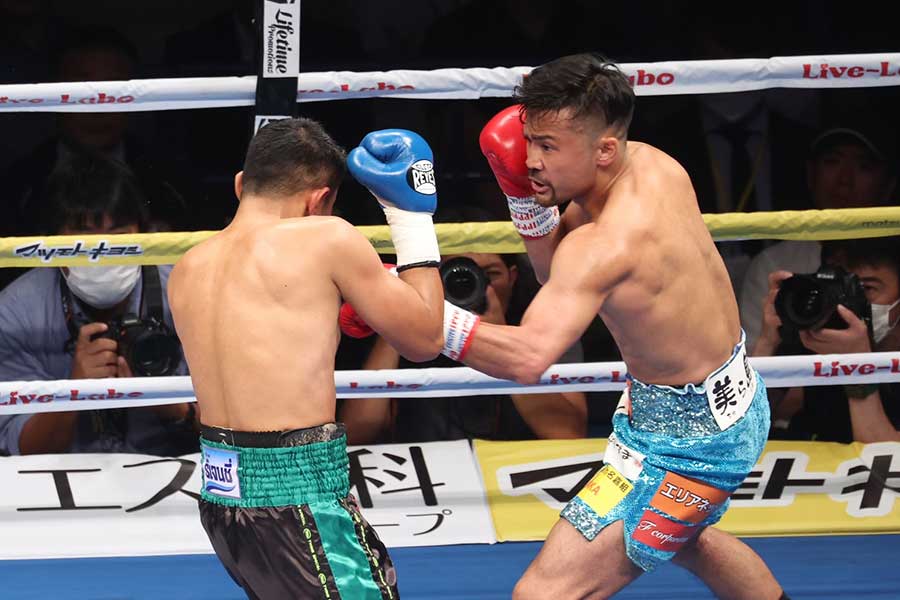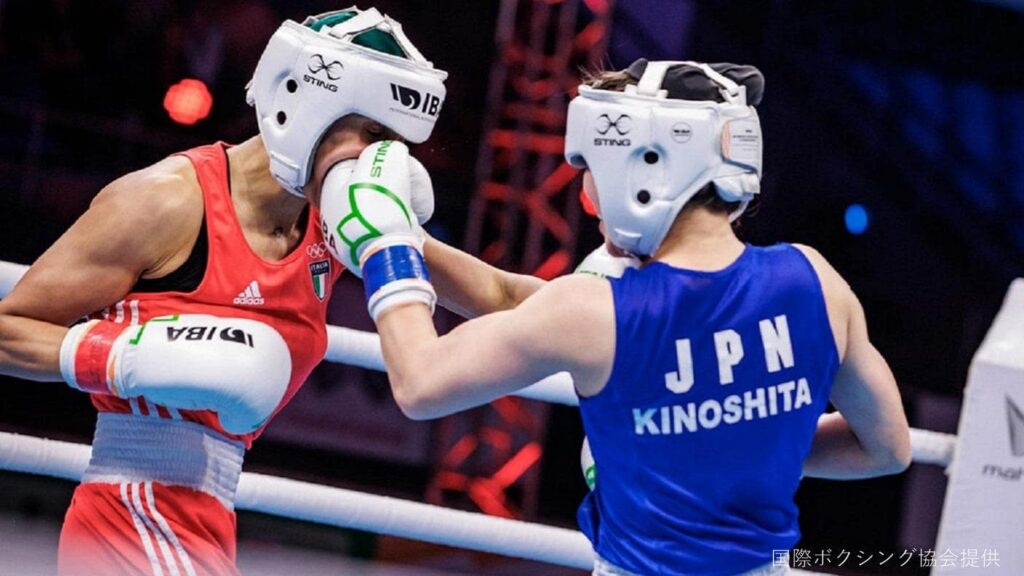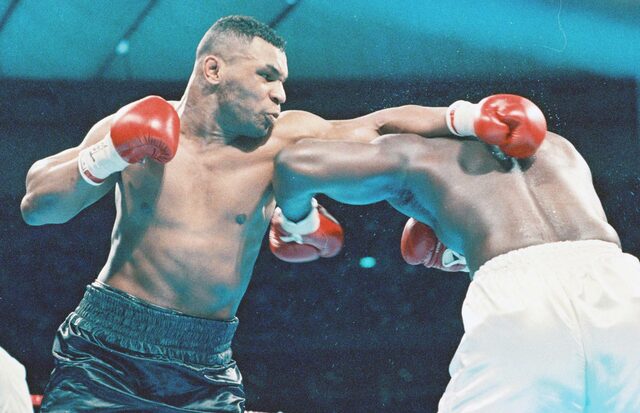
Boxing’s super bantamweight division, often filled with explosive action and elite athleticism, captures the imagination of boxing enthusiasts around the world.
Positioned between the bantamweight and featherweight classes, super bantamweight fighters typically weigh up to 122 pounds.
This division has produced some of the sport’s most memorable bouts and renowned champions, making it a focal point for fans and aspiring boxers alike.
In this comprehensive guide, we will delve into everything you need to know about the super bantamweight class—from its rich history and key fighters to the essential techniques and training strategies that define success at this level.
Whether you’re a seasoned follower of boxing or new to the sport, this article will provide you with a deeper understanding of what makes the super bantamweight division truly unique in the world of combat sports.
目次
- 1 Introduction to Super Bantamweight Boxing
- 2 History of the Super Bantamweight Division
- 3 Essential Techniques for Super Bantamweight Boxers
- 4 Training Regimen for Super Bantamweight Fighters
- 5 Nutrition and Weight Management
- 6 Mental Preparation and Psychology
- 7 Future Prospects in Super Bantamweight Boxing
- 8 Conclusion
Introduction to Super Bantamweight Boxing
Super Bantamweight refers to a weight class in professional boxing where fighters weigh up to 122 pounds (55 kg). It sits between the bantamweight and featherweight classes, attracting athletes who combine the speed of lighter weight classes with the strategic power of heavier divisions.
This category has become a breeding ground for some of the sport’s most tactical and exciting matches, showcasing a blend of agility and strength that is unparalleled in other weight classes.
Key characteristics of the Super Bantamweight division include a high level of technical skill and speed.
Boxers in this class are known for their quick footwork, rapid-fire combinations, and the ability to execute complex strategies against opponents.
The agility of super bantamweight fighters allows for thrilling exchanges and requires a deep understanding of both offensive and defensive boxing techniques.
Additionally, this division often features fighters who possess significant knockout power, making each bout unpredictable and highly engaging for fans.
The super bantamweight division continues to attract wide viewership and remains a critical weight class in the boxing world, often serving as a pivotal stage for fighters looking to make a name for themselves on the international scene.
As such, it holds a special place in the hearts of boxing enthusiasts, who admire the unique blend of speed, power, and technical prowess that super bantamweight boxers bring to the ring.

History of the Super Bantamweight Division
The Super Bantamweight division has a storied history filled with remarkable athletes who have left an indelible mark on the sport of boxing.
Established in the early 1970s, this weight class quickly became a platform for some of the most technically skilled boxers to showcase their abilities on a global stage.
Over the years, it has been home to numerous legendary fighters whose careers have significantly influenced the evolution of boxing.
Notable champions such as Wilfredo Gómez from Puerto Rico, who held the super bantamweight title in the late 1970s and early 1980s, set high standards for excellence in the division.
Gómez, known for his formidable knockout power and aggressive fighting style, defended his title successfully 17 times, earning a place in the Hall of Fame.
Another iconic figure is Israel Vázquez, whose trilogy with Rafael Márquez in the mid-2000s provided some of the most thrilling bouts in the division’s history, highlighting the intense rivalry and skill that define super bantamweight boxing.
The evolution of the weight class over the years can be observed in the increasing international diversity of its champions and the strategic shifts in fighting techniques.
The division has seen a transition from primarily power-based fighting to a more balanced approach that includes speed, agility, and technical precision.
This evolution reflects broader trends in boxing, where adaptability and all-around skill development become crucial for success at the highest levels.
Today, the super bantamweight division remains a vibrant and competitive category in boxing, continually attracting top-tier talent and maintaining a passionate fan base.
Its rich history and ongoing evolution make it a fascinating subject for both seasoned boxing followers and new enthusiasts eager to understand the dynamics of this exciting weight class.

Essential Techniques for Super Bantamweight Boxers
Mastering the super bantamweight division requires a deep understanding of both fundamental and advanced boxing techniques.
Boxers in this weight class must blend speed, precision, and power to outmaneuver their opponents and secure victories.
The essential techniques for any super bantamweight boxer include a repertoire of fundamental moves and combinations that are effective against a wide range of fighting styles.
Fundamental moves and combinations are the backbone of a boxer’s skill set in the super bantamweight division.
These include mastering the jab, which is crucial for maintaining distance and setting up other punches.
The cross, hook, and uppercut also play vital roles, each serving a specific purpose in both offense and defense.
Effective combinations often begin with a jab followed by a rapid succession of cross and hook punches, allowing fighters to break through defenses and create opportunities for more significant attacks.
Strategies for defense and attack are equally important in shaping a well-rounded super bantamweight boxer. Defensively, boxers must be adept at slipping and dodging, using their agility to avoid punches while positioning themselves for counterattacks.
The ability to quickly switch from defense to offense is a hallmark of top fighters in this class.
Offensively, understanding when to press the attack and when to draw an opponent in is crucial. Strategic use of feints and varied punching angles can disorient the opposition and open up paths for powerful combinations.
Together, these techniques and strategies form the foundation of success in the super bantamweight division.
Boxers who excel in these areas are often able to dominate their matches, displaying a blend of technical skill and tactical intelligence that makes super bantamweight boxing a thrilling spectacle to watch.

Training Regimen for Super Bantamweight Fighters
A robust training regimen is essential for any super bantamweight fighter aiming to compete at the highest levels of boxing.
This regimen must focus on both physical conditioning and skill enhancement to ensure fighters are well-prepared for the demands of the ring.
Tailoring a training program to the specific needs of super bantamweight athletes involves a mix of strength, endurance, and technical drills that promote overall fitness and combat readiness.
Strength and conditioning programs are critical for super bantamweight fighters, as they provide the necessary physical foundation for both attacking and enduring in the ring.
These programs often include weight training to build muscle strength and power, coupled with cardiovascular exercises like running and cycling to improve endurance.
Plyometric drills, which enhance explosiveness and speed, are also integral to developing the quick movements required in boxing. Such workouts help fighters maintain optimal weight and muscle mass, keeping them within their weight class while maximizing their physical capabilities.
Skill development drills focus on refining the techniques that are crucial for success in boxing.
These drills include sparring sessions, which simulate real fight scenarios, and pad work that helps sharpen punching accuracy and timing.
Footwork drills are also a staple of skill development, as they enhance agility and the ability to maneuver around an opponent effectively.
By regularly engaging in these targeted exercises, super bantamweight boxers can improve their reaction times, increase their hitting precision, and master the strategic movements necessary to outclass competitors.
By combining rigorous strength and conditioning programs with comprehensive skill development drills, super bantamweight fighters can ensure they are not only fit but also technically proficient.
This dual focus is essential for any athlete who aspires to rise to the top of this competitive boxing class, as it prepares them to face the diverse challenges presented by top-level opponents.

Nutrition and Weight Management
Effective nutrition and weight management are pivotal for super bantamweight boxers who must maintain a strict weight limit while ensuring they have the strength and stamina to compete.
A well-planned diet not only supports rigorous training regimes but also helps fighters remain in peak condition before and after each bout.
The right balance of nutrients can significantly impact a boxer’s performance, recovery, and overall health.
Dietary guidelines for maintaining weight class are essential for super bantamweight fighters.
These guidelines typically emphasize a balanced intake of carbohydrates, proteins, and fats to fuel the intense physical demands of training and fighting.
Carbohydrates are crucial for maintaining energy levels, while proteins are vital for muscle repair and growth. Fats are also necessary, albeit in moderation, to support metabolism and hormone health. Additionally, fighters are often advised to consume multiple small meals throughout the day to keep their metabolism active and manage hunger without overeating.
Hydration and its importance in weight management cannot be overstated.
Staying adequately hydrated is crucial for overall health, especially for athletes like boxers who lose significant amounts of water through sweat during training and matches.
Proper hydration helps maintain body temperature, lubricates joints, and facilitates muscle function.
For weight management, it plays a key role in helping control weight, as it assists in digestion and can help reduce the feeling of hunger. Moreover, maintaining hydration levels can significantly impact a fighter’s endurance and performance, as even slight dehydration can lead to fatigue and decreased cognitive function.
By adhering to these nutritional guidelines and focusing on proper hydration, super bantamweight boxers can effectively manage their weight and ensure they are competition-ready, optimizing both their health and their performance in the ring.

Mental Preparation and Psychology
Mental preparation is as crucial as physical training in the world of competitive boxing, particularly in the super bantamweight division where the margins for error are minimal.
Achieving mental toughness and employing effective psychological strategies are vital for athletes who must perform under the intense pressure of the ring.
A well-prepared mind not only enhances performance but also aids in recovery and resilience in the face of challenges.
Mental toughness in the ring is essential for super bantamweight boxers.
This quality enables fighters to remain focused, composed, and determined, regardless of the circumstances they face during a bout.
Mental toughness involves managing stress, overcoming adversity, and staying motivated even when the odds are against you.
Techniques such as visualization, where fighters imagine themselves succeeding in their bouts, and positive self-talk, which reinforces confidence and quells doubts, are common practices that help build this crucial mental resilience.
Psychological strategies used by top athletes often include a variety of cognitive and emotional approaches designed to enhance performance.
Goal setting is a fundamental strategy, providing clear objectives and a roadmap to achieving them, which keeps fighters aligned and focused throughout their training and competitions.
Mindfulness and meditation can also play significant roles, helping athletes maintain concentration and calmness by controlling breathing and managing in-the-moment thoughts.
Additionally, many top boxers work with sports psychologists to develop personalized coping strategies for dealing with the psychological demands of fighting, such as handling the pressure of public expectations and recovering mentally from injuries or defeats.
Incorporating these mental training techniques into their regular preparation routines ensures that super bantamweight boxers are not only physically ready but also mentally equipped to tackle any challenge they encounter inside the ring, ultimately leading to improved performance and a higher likelihood of success.

Future Prospects in Super Bantamweight Boxing
The super bantamweight division continues to be a hotbed of talent and excitement, promising a bright future for the sport of boxing.
As this category evolves, keeping an eye on emerging talents and understanding the trends shaping the division are crucial for fans and analysts alike.
The dynamic nature of the super bantamweight class ensures a continuous influx of skilled fighters, each bringing fresh techniques and strategies to the ring.
Upcoming talents to watch in the super bantamweight division are making significant waves, poised to become the future stars of boxing.
These young fighters often come from diverse backgrounds, bringing a blend of traditional boxing skills and innovative approaches that challenge the status quo.
Observers should look out for athletes who have excelled in national and international amateur championships, as these platforms are often springboards for professional success.
With advancements in training techniques and a greater emphasis on comprehensive athletic development, the new generation of super bantamweights is likely to push the boundaries of what is possible in the ring.
Predictions and trends in the division suggest a shift towards more technically sophisticated fighters who also possess robust physical conditioning.
The trend towards globalization in boxing has introduced a variety of fighting styles and techniques, enriching the tactical complexity of matches.
Additionally, the increasing popularity of boxing as a global sport is attracting more investment and attention, leading to better promotion and development opportunities for fighters.
Technological advancements in training, nutrition, and injury prevention are also expected to enhance fighters’ performance and career longevity, making the super bantamweight division even more competitive and thrilling to watch.
With these developments, the future of super bantamweight boxing looks incredibly promising, offering fans plenty of action, drama, and an opportunity to witness the rise of new champions who will carry the legacy of this exciting weight class forward.

Conclusion
The journey to success in super bantamweight boxing is as thrilling as it is challenging, marked by a combination of physical prowess, technical skill, and mental toughness.
This weight class not only showcases some of the most dynamic and strategic bouts in the sport but also serves as a testament to the dedication and resilience of the athletes who compete in it.
Understanding the essential elements that contribute to a boxer’s success in this division can provide valuable insights for both fans and aspiring fighters.
Summarizing the keys to success in super bantamweight boxing involves highlighting the importance of a comprehensive training regimen that includes strength, conditioning, and skill development.
Nutrition and weight management play critical roles in maintaining a fighter’s health and competitive edge, while mental preparation and psychological strategies determine their ability to perform under pressure.
Additionally, staying informed about the evolution of the division and the emergence of new talents can offer strategic advantages.
Encouraging aspiring boxers, it’s important to emphasize that success in boxing, particularly in a competitive division like super bantamweight, requires more than just physical strength.
It demands dedication to continuous improvement, a deep understanding of the sport’s fundamentals, and a resilient spirit. Young fighters should seek mentorship, invest in their training and health, and remain committed to learning and adapting.
The path to becoming a champion is filled with both challenges and rewards, and every round in the ring builds character and skill.
For those looking to make their mark in super bantamweight boxing, embracing these principles and preparing for the rigors of the sport will not only enhance their performance but also enrich their experience in the world of professional boxing.

